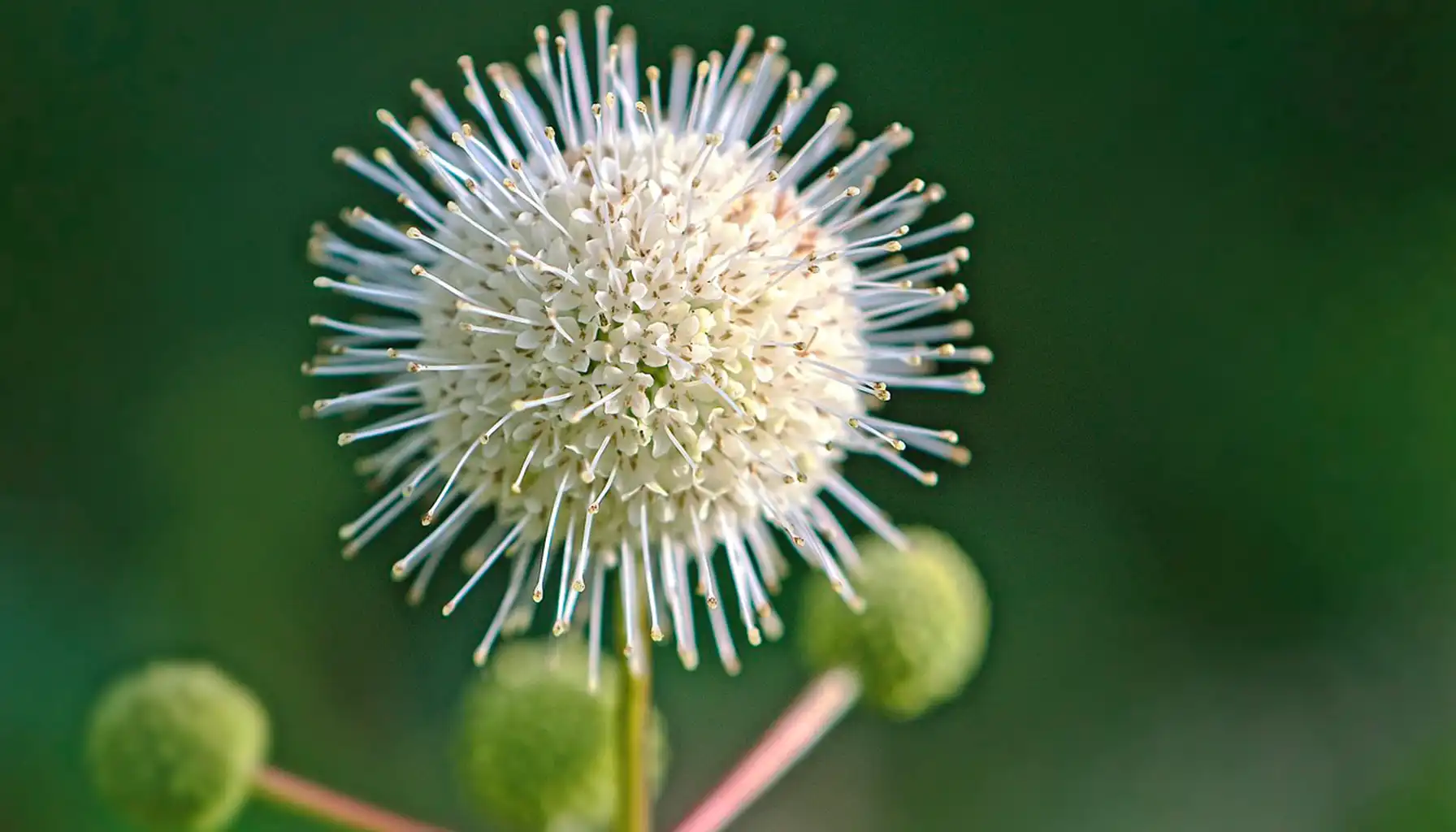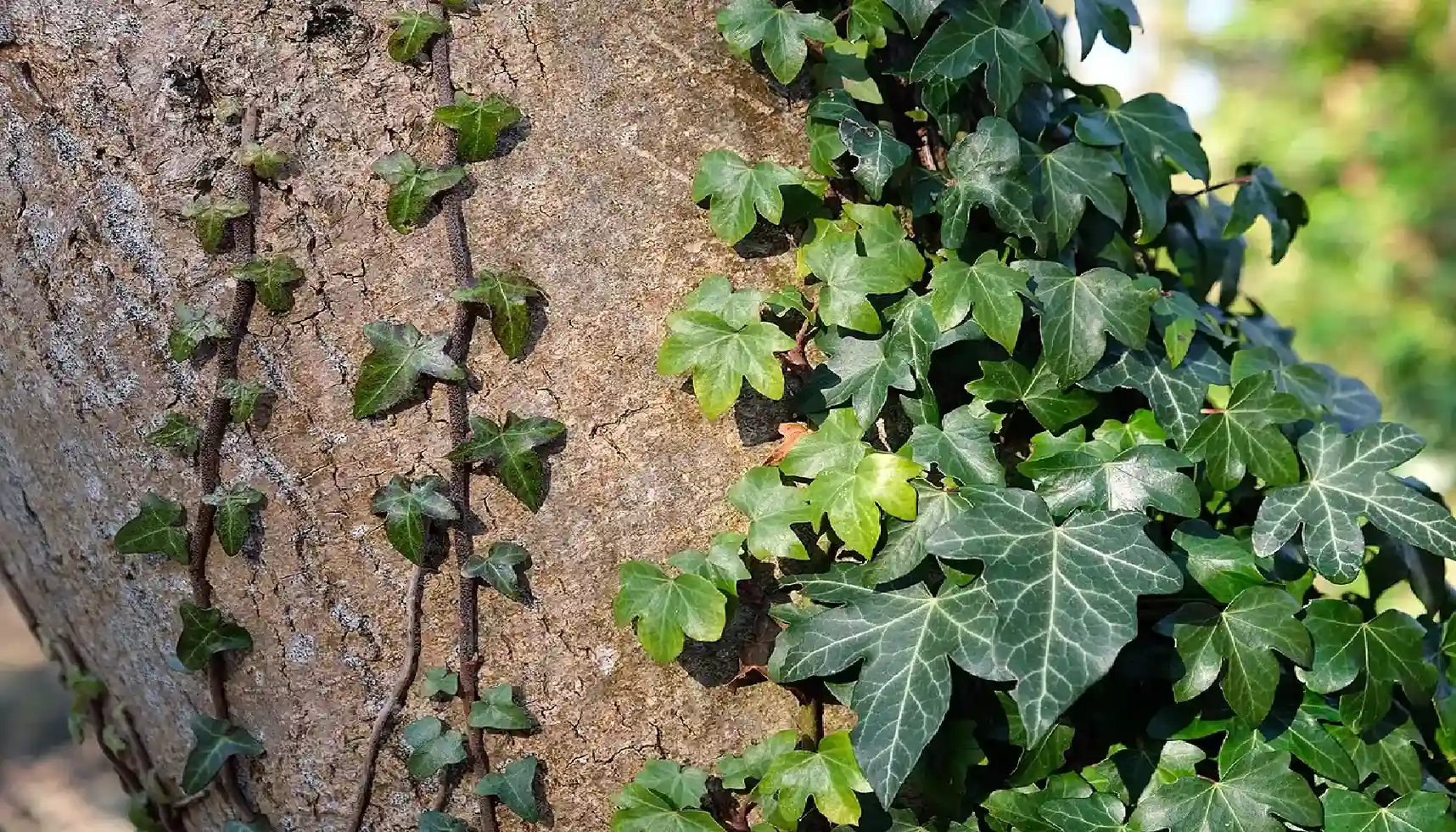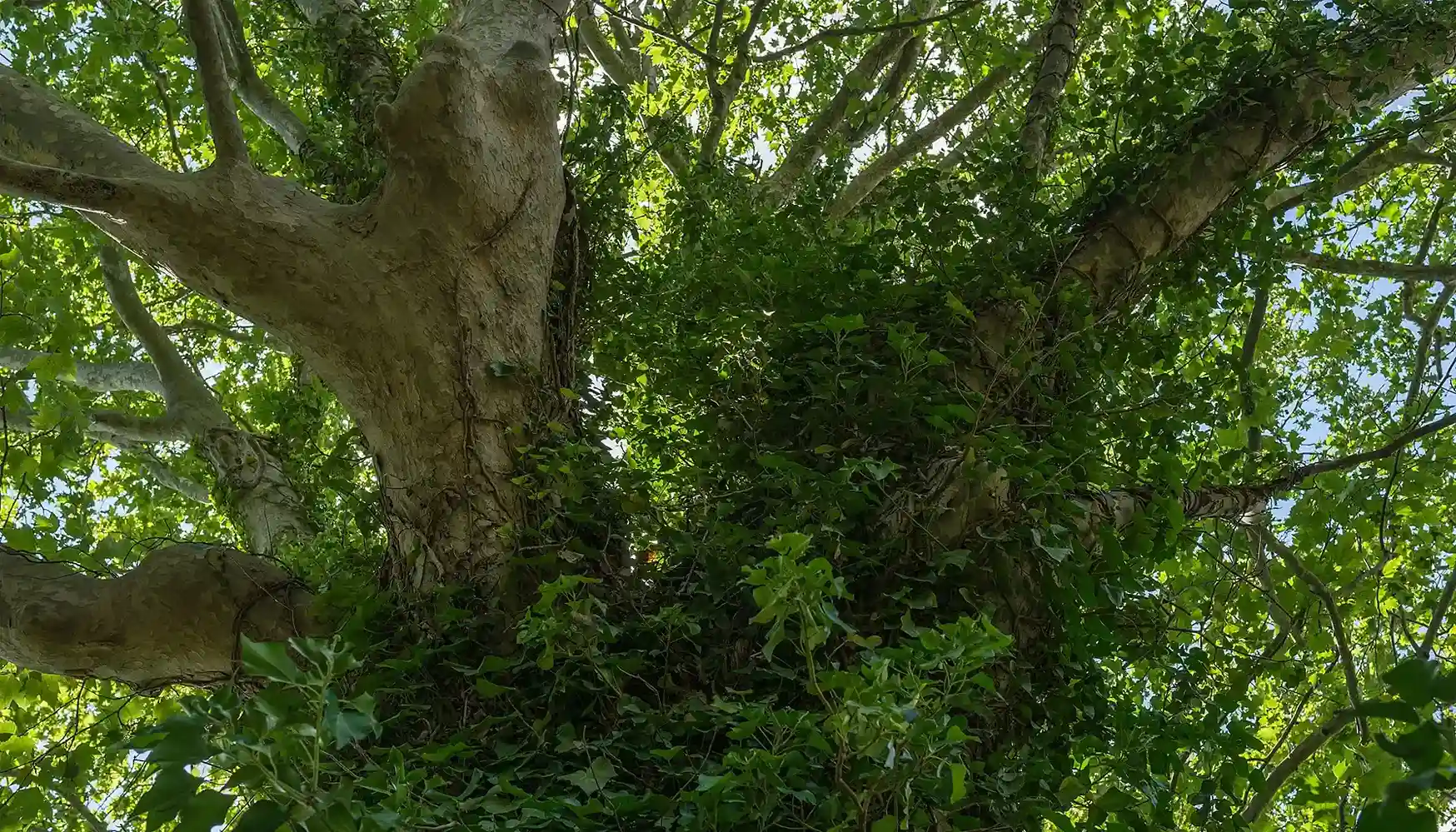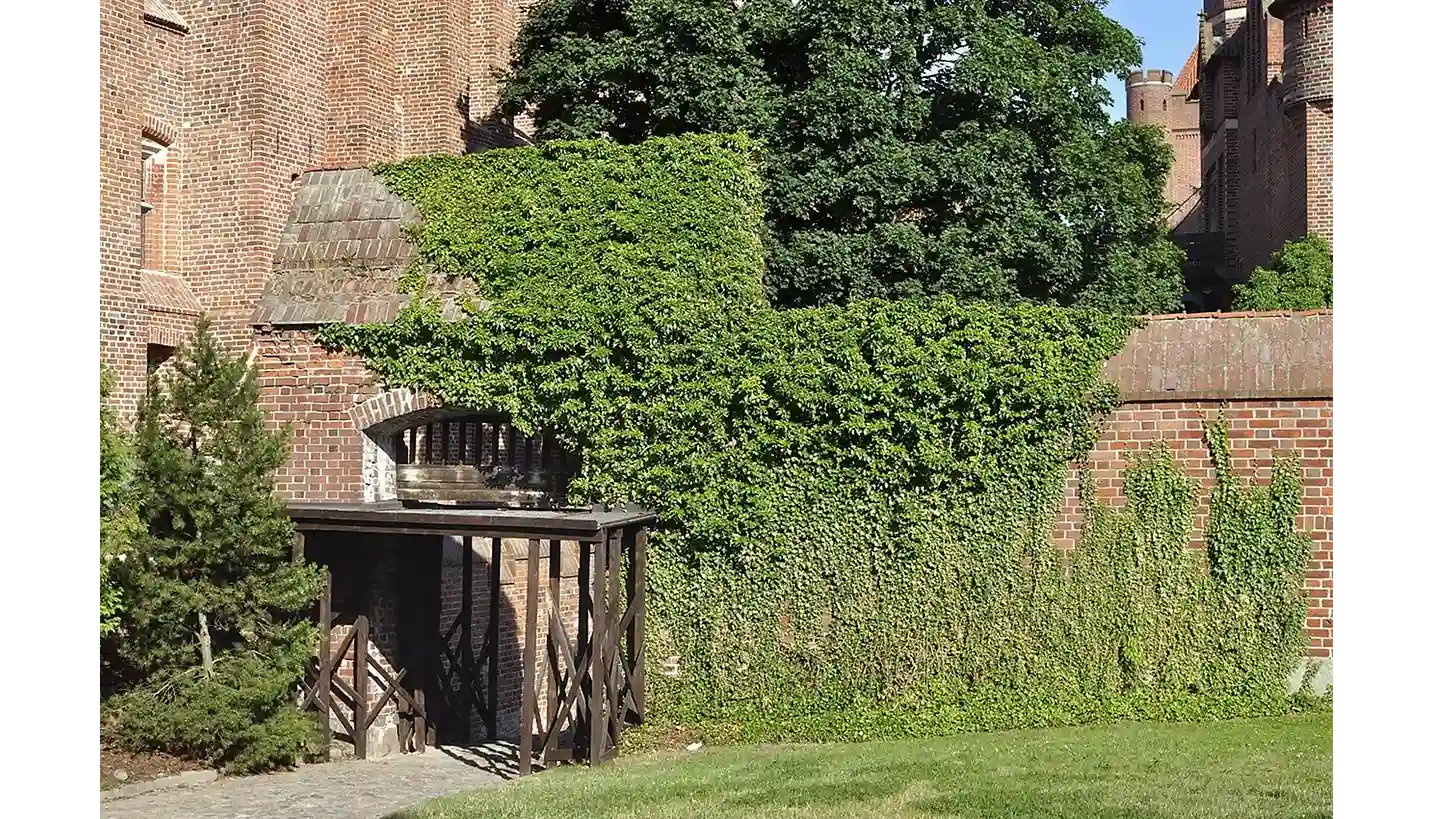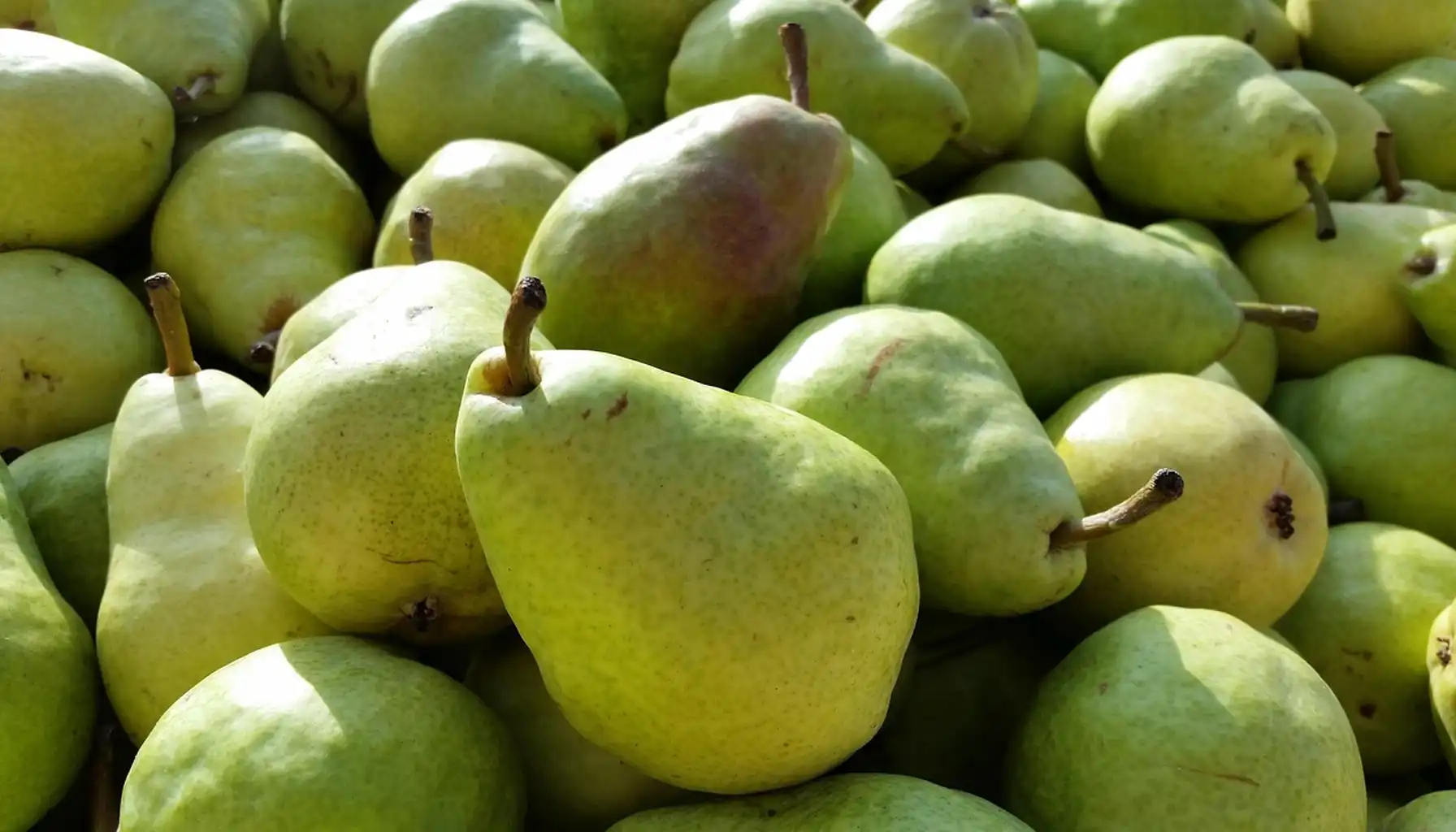English Ivy (Hedera helix) is an evergreen climbing plant native to Europe and western Asia. It’s widely cultivated and naturalized in many parts of the world. But what plant is this exactly, and do you need to have one?
The ivy name meaning in English comes from the word for the plant and symbolizes fidelity, eternal life, and affection. In ancient times, ivy was associated with weddings and enduring love, as it clings tightly and persistently to what it grows upon.
Is English Ivy Invasive?
It’s invasive because it spreads rapidly, clings to almost any surface, and thrives in different conditions.
Outdoors, it often escapes garden boundaries and overruns forests, parks and urban green spaces. Once established, it forms dense mats on the ground that block sunlight and prevent native plants from growing. It also climbs trees, where it can smother leaves, weaken branches, and make them more vulnerable to disease or storm damage.
In regions like the Pacific Northwest or southeastern U.S., ivy has become a serious ecological problem. It grows year-round, doesn’t face many natural threats, and can take years to fully remove once it takes hold. That’s why many local authorities discourage planting it outdoors and may even ban its sale or cultivation. We’ll discuss how to get rid of English Ivy in this article.
If you grow an English Ivy plant in your garden, you should monitor it closely, prune it regularly, and prevent it from reaching trees or spreading into nearby wild areas. English Ivy indoors is much less of a risk since it stays contained, but even then, it should be kept trimmed and healthy.
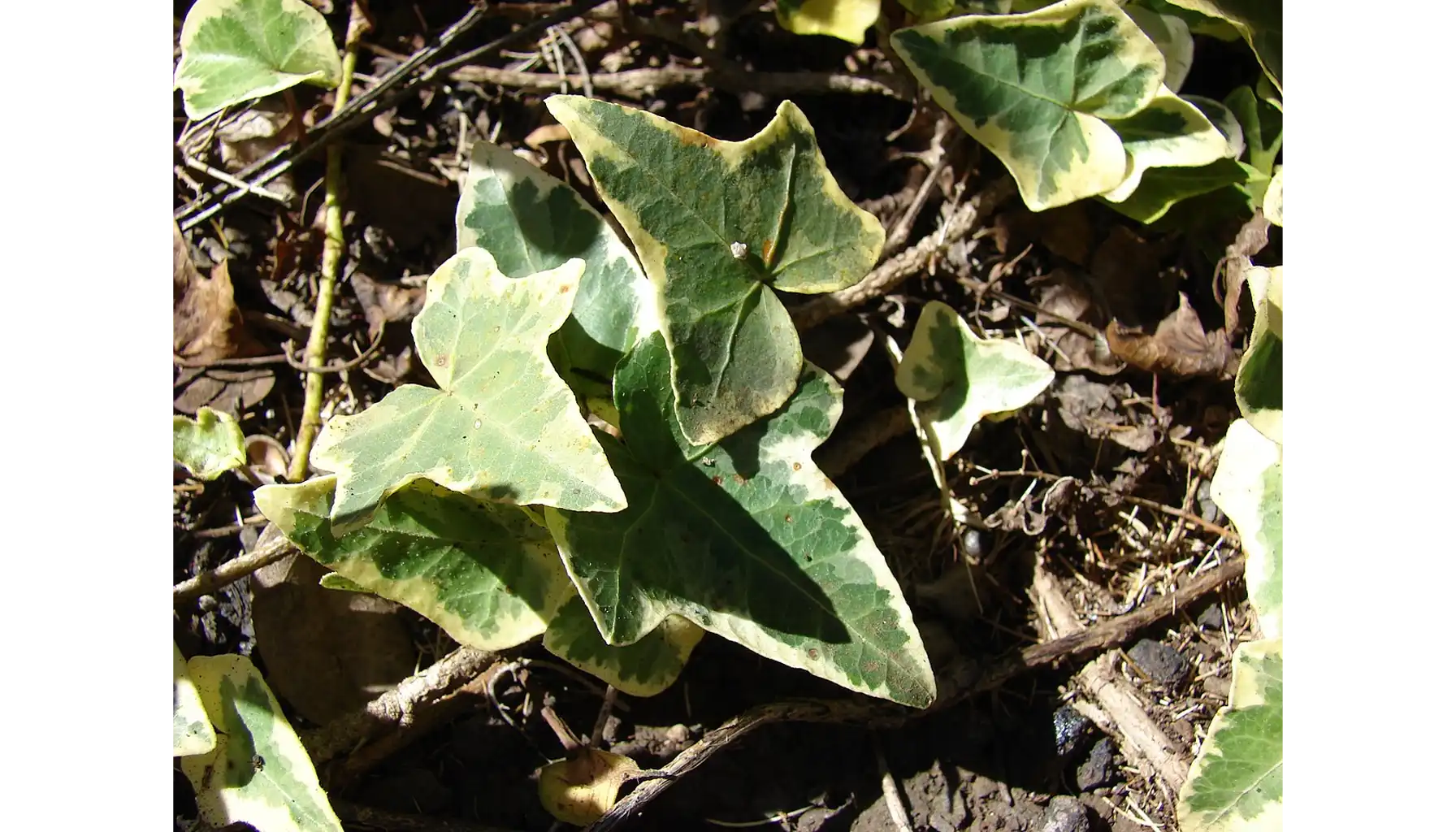
Feature | English Ivy Houseplant | Outdoors |
English Ivy Light Requirements | Bright, indirect light preferred; tolerates low light | Shade to partial sun; avoids hot, direct sunlight |
Growth Habit | Slower, more compact; trails from pots or climbs supports | Vigorous spreader; climbs walls, fences, or spreads as groundcover |
Pruning | Occasional trimming to shape and prevent legginess | Frequent pruning needed to control invasiveness |
Air Quality Impact | Known to help filter indoor air pollutants | Provides wildlife habitat; erosion control |
Pests | Susceptible to spider mites, aphids, mealybugs | May attract aphids or scale; less prone than indoor plants |
Temperature | Thrives at 10–21°C (50–70°F); avoid cold drafts or heaters | Hardy in USDA Zones 4–9; tolerates frost and cold winters |
Toxicity Risk | Higher—close proximity to pets or children indoors | Lower—usually out of reach of direct contact |
Invasiveness | Non-invasive indoors (contained in pots) | Highly invasive in many climates; can outcompete native species |
Toxicity for Pets
Main Toxin: The plant contains saponins (hederagenin), which irritate the digestive tract.
Recommendation: Keep it away from all pets—indoors and outdoors. If ingestion occurs, contact a veterinarian immediately.
Here are more toxic plants to avoid.
Is English Ivy Toxic to Cats?
Yes, it’s toxic to cats. The most dangerous parts are the leaves and berries. If a cat chews or ingests the plant, symptoms may include drooling, vomiting, abdominal pain, diarrhea and excessive pawing at the mouth.
Is English Ivy Poisonous to Dogs?
It’s also toxic to dogs. Ingesting the leaves or berries can lead to vomiting, diarrhea, abdominal discomfort and excessive salivation. In most cases, symptoms are mild to moderate, but repeated or large ingestion may require veterinary care.
Birds
Though less common, pet birds can be affected if they nibble on this plant. The toxins may cause digestive upset, lethargy and general weakness. Birds are particularly vulnerable to plant toxins. Keep ivy out of reach.
Rabbits and Guinea Pigs
Both are at high risk. Ingesting ivy can cause bloating, refusal to eat, lethargy and gastrointestinal distress. Because of their small body size and sensitive digestion, even a little bit can be dangerous.
Horses
It’s toxic to horses as well. If ingested, it may cause colic, diarrhea, weakness or loss of coordination. Grazing animals should not have access to ivy-covered fences or structures.
How to Care for English Ivy?
Light
Indoors: Prefers bright, indirect light. Tolerates low light but grows slower.
Outdoors: Thrives in partial shade. Avoid intense, direct afternoon sun.
Watering
Temperature & Humidity
Ideal: 10–21°C (50–70°F).
Humidity: Likes moderate to high humidity indoors. Mist in dry climates or during winter heating.
Hardiness: USDA Zones 4–9. Can survive frost; evergreen in mild winters.
Soil
Well-draining, fertile soil is best.
pH range: slightly acidic to neutral (6.0–7.5).
Add compost or organic matter for outdoor ivy.
Pruning
Prune regularly to maintain shape and size.
Cut back aggressively if it becomes leggy or invasive.
Use clean shears and gloves (sap can irritate skin).
Repotting (Indoor English Ivy)
Pest & Disease Management English Ivy Care
Watch for spider mites, aphids, and mealybugs (especially indoors).
Treat with insecticidal soap or neem oil.
Prevent fungal issues by avoiding overwatering and ensuring airflow.
How to Kill English Ivy?
1. Manual Removal (Best for Small Areas or Gardens)
Start by cutting the vines at the base to disconnect them from their roots. If ivy is climbing trees or walls, do not pull it down immediately—cut it and allow it to die first to avoid bark or structural damage. Then, dig up the root system thoroughly. Any roots left in the soil may resprout, so return every few weeks to recheck the area.
2. Smothering
After cutting and removing as much ivy as possible, cover the area with heavy-duty landscape fabric, thick cardboard, or black plastic. Weigh it down and leave it for several months. Lack of light will weaken or kill new growth and prevent photosynthesis.
3. Herbicide Application English Ivy Killer (Only if Necessary)
Use a glyphosate-based herbicide or triclopyr for stubborn regrowth. Apply it directly to the cut stems or freshly exposed leaves, ideally in dry weather when plants are actively growing. Ivy's waxy leaves resist absorption, so roughing up the surface or using a surfactant helps improve effectiveness. Avoid spraying near desirable plants.
4. Ongoing Monitoring
Even after removal, ivy often regrows from overlooked roots or stem fragments. Inspect the area regularly for months or even years, and pull out any shoots immediately before they take hold again.
Caution: Never compost pulled ivy—it can reroot. Always bag and dispose of it securely.
FAQs
How to propagate English Ivy?
To do it, select a healthy vine and snip a 4–6 inch segment just below a leaf node. Remove the leaves on the lower half and place the cutting in a glass of water or moist potting soil.
Within two to three weeks, roots usually start to form. Once the roots are about an inch long, you can transplant the cutting into soil. For best results, keep it in a warm, bright location away from direct sunlight during English Ivy propagation.
How fast does English Ivy grow?
In optimal outdoor conditions, it can grow up to 9 feet (about 2.7 meters) in a single year.
Its growth rate indoors is slower. When well-watered and given enough light, it grows steadily and will quickly fill out a planter or climb a support. However, without pruning, its fast growth can lead to a leggy or overgrown appearance indoors and can become invasive outdoors.
Does English Ivy flower?
Yes, but only under specific conditions. The plant only produces flowers once it reaches maturity, which can take several years and typically only happens when it grows vertically.
English Ivy flowers are small, greenish-yellow, and grow in umbrella-like clusters called umbels. They’re not particularly decorative but are rich in nectar and attract bees and other pollinators. After flowering, the plant may produce black berries, which are toxic to humans and pets if ingested.
What are English Ivy benefits?
- Aesthetic: Evergreen foliage for gardens and interiors.
- Air purification: Studies (including by NASA) suggest it helps remove pollutants like formaldehyde and mold spores indoors.
- Erosion control: Outdoors, it holds soil in place on slopes and embankments.
- Wildlife habitat: Its dense foliage provides shelter for small birds and insects.
Boston Ivy vs English Ivy: Is there any difference?
Yes, these are two completely different plants. English Ivy (Hedera helix) is an evergreen with leathery, lobed leaves and rootlets that cling to surfaces. In contrast, Boston Ivy (Parthenocissus tricuspidata) is a deciduous vine from the grape family with broad, three-lobed leaves and sticky discs that adhere to walls.
Is variegated English Ivy different in care?
It requires more light than solid green varieties to maintain its colorful variegation. In low-light settings, it may revert to green to increase photosynthesis. Other care aspects—watering, pruning, and soil—are the same. Outdoors, variegated ivy grows slower and may be slightly less aggressive than green-leaf types.
Where can I find English Ivy for sale?
It’s available at garden centers, home improvement stores and online plant retailers. It’s often sold in hanging baskets, small starter pots, or as ground cover flats.
If you're looking for a specific variety (like variegated or mini types), online nurseries may be useful. Searching for “English Ivy near me” or visiting a local nursery is a great way to find healthy, pest-free plants suited for your climate.
Is there English Ivy Indianapolis?
Yes, it’s common in Indianapolis, both as an English Ivy ground cover in landscaping and as an escapee in woodlands and parks. However, due to its invasive tendencies, local gardening groups and environmental organizations often discourage its use in outdoor plantings.
Related AI Plant Finder Posts
